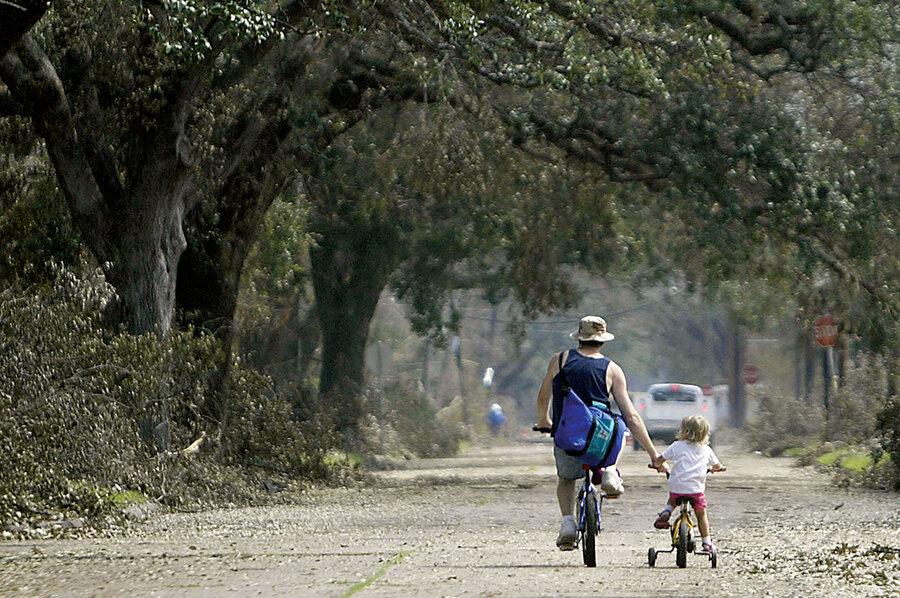Learning a new way to ride
Loading...
"Hey Dad, slow down!"
That's my daughter calling. Though I am moving at what I consider a snail's pace, she has fallen at least 30 feet behind. Checking over one shoulder, I see a pair of young legs moving in a way that cannot be having much effect on her forward motion. Her feet trace lazy circles in the air.
"Dad, you're going too fast!"
She'd recently expressed interest in riding more. We live in a small city with a mild climate, and bicycles are a popular transportation choice here. They are my main means of travel, so I was thrilled at her announcement. She would soon, I was certain, learn how easy it is to get around this way, how fast she can maneuver on two wheels. Bike excursions are often quicker, door to door, than bus or cab or car trips are.
Much to my surprise, none of this mattered to her.
On one of our first trips together, I was concentrating on the route ahead – anticipating turns, gauging our estimated arrival time against the numbers on my watch – when her voice suddenly sounded on my right. "Hey Dad, wanna know a riddle?"
My child had pulled alongside me. "It's a good one," she grinned. And then, before I had a chance to explain how inappropriate this was, how neither of us should be telling jokes while riding, how we should be focused on the road, on pedaling, on reaching our destination as soon as we could, she started: "What lasts forever but never dies?"
This is how it's been. In the course of our journeys I have heard tongue twisters and song lyrics. She has shared stories from the past, hopes for the future. I have been challenged to pedal backward, to stretch legs out on both sides, to bump through every pothole on the block before dance class.
None of this has been dangerous, mind you. My daughter does not ride without proper care or attention. She pulls even with me, for instance, only on wide, empty streets. When the occasional car appears, she quietly slips behind me and holds both eyes to the road. As soon as conditions of basic safety are met, though ...
"Dad, slow down!"
With rolling eyes, I squeeze my brakes and slow to nearly stationary. Any slower and I could lose my balance. Teetering, I glance at my watch. What I see tenses my jaw. "Isn't this a lovely neighborhood?" my daughter asks.
I want to yell at her for stalling. In the process of swinging around, however, I see the homes lining the street we are moving along. They are older, all of them. Modest and pressed close together, each radiates an affecting sense of being cared for – from imaginative flower beds to a lively choice of paint: eggplant purple, Provence gold, cerulean blue.
It is a lovely neighborhood, I realize placing one foot on the ground. I'm surprised. I've come this way countless times, but never have I noticed any of this. "Look at those gardens," my daughter enthuses. Farther down the road, the laughter of children tumbles out from a game of stickball.
I formulate a vow. From now on, I'm going to move more slowly on these rides. I'm going to notice the neighborhoods we glide through. "I'm going to enjoy this," I am thinking when everything comes to a halt.
My daughter is pointing to a tiny park tucked between two homes. A hand-painted sign announces its presence, hovering over a shadowy entrance that, lost in thought, I would have missed had we not paused, had she not extended one arm and directed my gaze.
Smiling, I realize that the next time we're on the road, more likely than not, I'm going to be just as destination-driven and time-conscious as ever. I'm not going to notice the driftwood carvings in front of that house, the funky table offered "FREE." I will not choose to slow down in order to play "Wiggle your front wheel" between marks on the pavement.
So I affirm a humbler aim. "Let's ride this way," my daughter suggests, starting up again. I watch her wobble away, then start off myself, trying as best I can to do the same.







